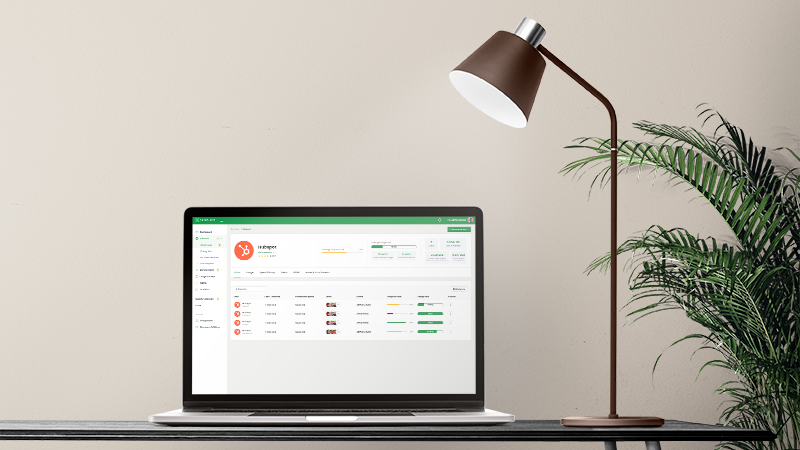Table of Content
What is a SaaS management platform?
What size warrants a company to adopt a SaaS management platform?
At what point isn't a spreadsheet enough?
What is the best saas management platform for our company?
SaaS Management platforms for large enterprises vs. SMEs
Key Takeaways
- The growth of SaaS subscriptions in companies has skyrocketed since the SaaS model was introduced, and SaaS usage is steadily increasing. However a significant change has occurred lately; large enterprises are no longer driving the growth.
- Instead, small and medium-sized businesses are now adding new SaaS applications at a higher rate than their larger counterparts, with medium-sized companies driving growth with an increase of 35% more SaaS applications in 2022 than one year before.
- By 2027, 40% of organizations using multiple SaaS applications will centralize management using a SaaS management platform, according to Gartner.
- The SaaS Management platform market is fragmented, and some differences between solutions targeting large enterprises and SMEs are important to be aware of if you consider investing in such a tool.
This article helps you understand SaaS management platforms, if and when you should consider investing in one, and the best SaaS management practices.
What is a SaaS management platform?
A SaaS management platform (or SMP) provides increased SaaS spend visibility and visibility into SaaS usage, cost optimization through better spend management and subscription renewal alerts. It increases security by detecting shadow IT, helping to handle sensitive data, and mitigating risks for other security threats. It also simplifies administration by streamlining onboarding and offboarding, cutting out manual tasks, simplifying budgeting, and improving user experience and scalability, making it valuable for companies that want to manage their SaaS portfolio effectively. If you want to learn more, read our guide about SaaS Management and its best practices.
Whether or not to use a proper SaaS management platform will depend on your company’s specific future needs, budget, and priorities. Either way, it's essential to carefully weigh the pros and cons before deciding.
What size warrants a company to adopt a SaaS management platform?
The size of a company is just one factor to consider when determining whether or not to invest in a SaaS management tool. Other factors include the number of SaaS applications being used, the complexity of the IT environment, and the level of security and compliance requirements.
That being said, as a company grows, managing its SaaS applications becomes more complex. As the number of SaaS applications employees use increases, shadow IT and tracking software licenses and how much is spent on licenses can become difficult.
Therefore, a SaaS management platform may make sense for companies of all sizes, depending on the organization's specific needs.
In general, if your organization uses more than a few SaaS applications, it's worth considering a SaaS management platform to help streamline operations, increase efficiency, improve cost optimization, and ensure compliance with security and privacy regulations.

At what point isn't a spreadsheet enough to manage a company's SaaS-portfolio?
Many companies use a spreadsheet or have built something in, for example, Microsoft Sharepoint, instead of using a SaaS platform to manage SaaS applications, user licenses, and spend. Determining what is best practice and when a spreadsheet is insufficient for managing a company's SaaS portfolio depends on various factors.
Too many SaaS applications: Managing them all in a spreadsheet can quickly become unwieldy and time-consuming if a company uses many SaaS applications.
The complexity of management tasks: As the administrative functions and tasks required become more complex, such as managing user access, monitoring usage and shadow IT detection, streamlining onboarding and offboarding, and tracking costs, a spreadsheet may no longer be able to keep up with the demands of the organization.
Lack of data accuracy and consistency: A spreadsheet can be prone to errors and inconsistencies, mainly when multiple people update it. This leads to inaccurate data, affecting the organization's ability to make informed vendor management decisions. It also leads to employees and managers ending up spending more time finding and gathering data than necessary.
Need for automation: As management tasks become more complex, automation may need to improve efficiency and reduce the risk of errors. Spreadsheets are designed for something other than automation, making them unsuitable for these tasks.
If a company experiences a lack of visibility into app usage and finds it difficult to manage its SaaS portfolio using a spreadsheet, it may be time to consider implementing a SaaS platform that can provide more advanced functionality and simplify vendor management.
What is the best SaaS management platform for our company?
The SaaS management market is still fragmented, with many vendors offering different solutions. This can make it difficult for businesses to evaluate such tools and choose the best solution for their needs.
Main differences between SaaS Management platforms for large enterprises and SMEs
The main differences between SaaS management platforms that target large enterprises vs. small and medium-sized businesses are complexity, price, and integrations. Large enterprises need more advanced tools to handle their complex needs, while small and medium-sized companies look for affordable, user-friendly options to help them manage their SaaS applications.
SaaS management platforms designed for large enterprises often have a wider range of features and functionalities than those designed for SMEs. Large enterprises have more complex needs, so their SaaS management platforms must handle more advanced functions, such as integrating multiple systems, advanced reporting, and customizations. On the other hand, SME-focused tools may have fewer features and functionalities, but they are often more user-friendly and easier to set up.
SaaS management platforms for large enterprises largely depend on direct integrations with SaaS vendors. This allows them to offer real-time information and automatic user provisioning, which is a time saver if there is a constant and high flow of employees and a need to automate and streamline onboarding and offboarding.
However, SaaS management platforms based on direct integrations do not work as well for SMEs. SMEs use services that are less likely to offer the kind of API connections that make direct integrations possible. In addition, it is common that the SaaS companies who do offer such API connections put them on an enterprise plan, which SMEs do not buy to the same extent as large companies. The result of SMEs buying an enterprise-focused SaaS management platform is often implementing a relatively complex and pricy solution that automates less of their SaaS management than they’d wish.
Examples of SaaS management platform solutions designed for larger enterprises are Zylo, Zluri, and Snow Software.
Examples of SaaS Management platform solutions designed for small and medium-sized businesses are Substly, NachoNacho, and Cledara.
If you work in a small or medium-sized business and seek a SaaS management platform with a short learning curve that is user-friendly and strengthens the cooperation between IT and Business, consider exploring Substly to see if it suits your needs.



.jpg)
